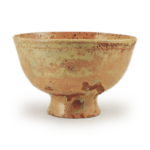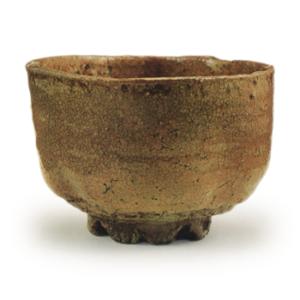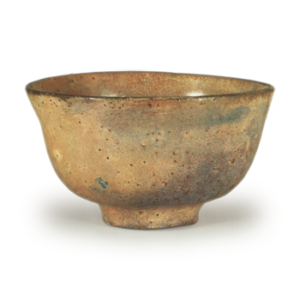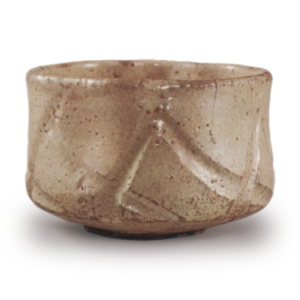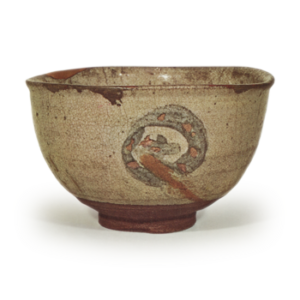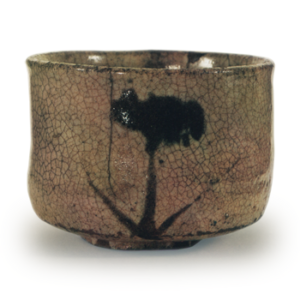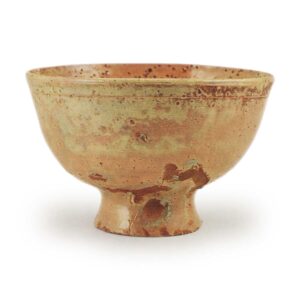
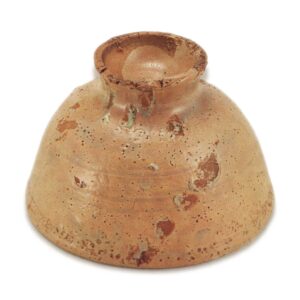
Height: 8.3-9.8cm
Diameter: 13.0-13.5cm
Outer diameter of foot ring: 6.0cm
Height of foot ring: 2.4cm
This is a famous bowl that was once owned by the Hirooka family of the Kashimaya store in Osaka. It is said that when there was a competition to see who had the best bowls in Osaka, none of the other bowls could compare to this one.
In the book “Mekirigusa”, it is written, “The Daitokuji Goki is large, and the Ami Goki is like a hand slipping between the Daitokuji and Momiji Goki. The Momiji Goki in the middle is said to be the best of the Goki. In addition to the Momiji Goki of the Hirooka family, the Taisho Meiki Kan also lists two other bowls: the Zangetsu of the Fujita family and the Momiji Goki of the Asano family. However, it is generally agreed that there are no other bowls that can match this one in terms of appearance, workmanship, glaze, and finish.
The clay body is a rough clay with a small amount of iron and sand, and a glaze with a slightly cloudy transparency is applied relatively thickly to the entire inside, outside and bottom.
The firing is called neutral flame, and is neither reduction nor oxidation, but is slightly oxidized, and the clay is slightly reddish. The upper half of the body is a light blue color with red speckles scattered all over the inside and outside, and the lower half is generally a light reddish brown. As the phrase “Kouyou-goki, iro-akimaru wo suki” (“Tea utensil connoisseur’s handbook”) suggests, tea masters love this subtle reddish color.
The shape is elegant, and is commonly referred to as a goki shape, with a bowl-shaped body supported by a large, high foot ring.
The rim is slightly curved outwards and rounded, and the underside of the base is deeply incised. The glaze has been applied by grasping the bowl in one’s hands, and the four finger marks left on the body are clearly visible at an angle, and there is also a group of finger marks on the opposite side of the foot ring.
There are several cracks in the foot ring, and there are four marks on the foot ring. The bottom of the bowl is half-moon shaped, and the glaze is not applied to the bottom, revealing the clay. There is also a rectangular area on the inside near the rim that is not glazed. The rim is close to perfect, with no cracks or fraying, and the bowl is relatively thin.
The inner box is black lacquered and decorated with gold and silver maki-e arabesque patterns, and the underside of the lid is decorated with gold and silver Nashiji patterns, within which is a landscape painting in black ink of a pine grove and a flower garden, known as the Shokado brushwork style. The middle box is decorated with paulownia Shunkei lacquerware. The outer box is a Chinese-style box with a wisteria pattern, known as a Chinese crown box.
It was owned by the wealthy Osaka merchant Tennojiya Gohei, and then passed to the Kashimaya Hirooka family, but it became famous in 1928 when it was sold at auction to Kashimaya for the then-unprecedented sum of 189,000 yen.

